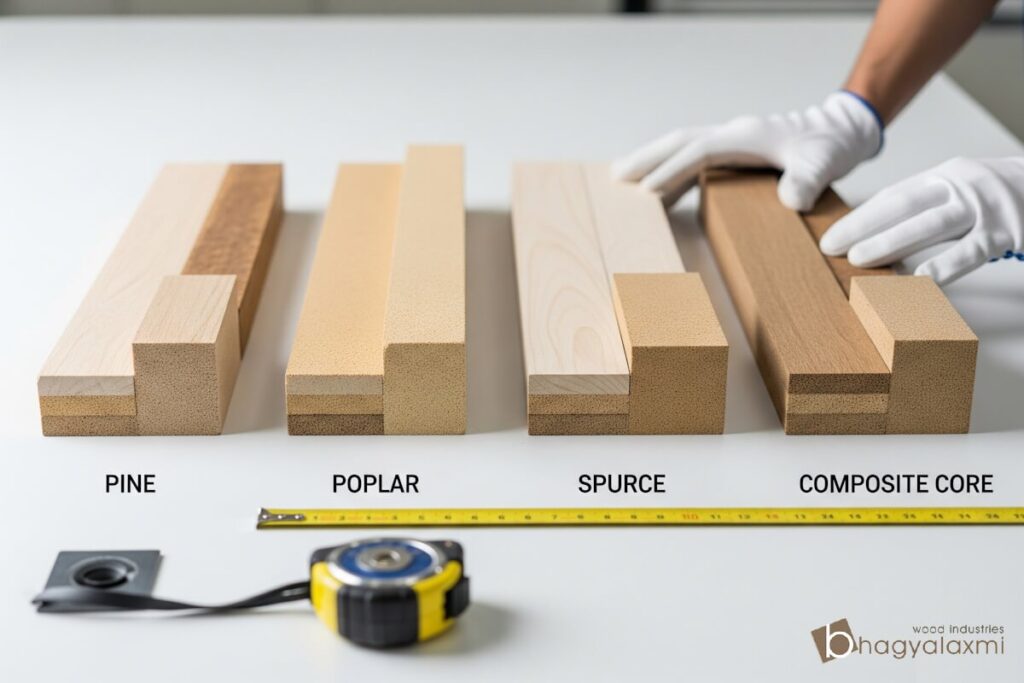
When you’re planning a woodworking project or sourcing materials for furniture, choosing the right core for your block board can make a big difference. Block boards are a common choice in many projects because they offer strength and stability. But not all block boards are the same. The type of core used in a block board affects its weight, durability, workability, and cost.
So, how do you figure out which one works best for your project? Let’s break down the types of block board cores and see how they stack up against each other.
What Are Block Boards?
Before diving into core types, it helps to understand what block boards are. These are engineered wood panels made by sandwiching a core of wooden strips between two layers of veneer. The core strips are usually around 25mm wide and placed edge to edge. The entire board is then glued under high pressure to form a solid, smooth panel.
Block boards are often preferred for furniture like tables, shelves, and doors because they’re less prone to warping compared to solid wood. They also weigh less than plywood, making them easier to handle.
Now let’s focus on the heart of block boards – their core.
Looking for practical insights on block boards? You’re in the right place.
Types of Block Board Cores
1. Softwood Core
Softwood cores are made using woods like pine, fir, or spruce. These cores are lightweight and easy to cut, which makes them a favorite for interior furniture.
Why choose softwood core?
- It’s lighter than hardwood cores, so it’s ideal for cabinets and wall panels.
- Easy to nail or screw into.
- Affordable for budget-conscious projects.
Drawbacks? Softwood isn’t as dense, so it may not handle heavy loads as well as hardwood cores.
2. Hardwood Core
Hardwood cores use strips of denser woods like teak, oak, or birch. These are stronger and more resistant to dents or scratches.
Why choose hardwood core?
- Superior strength and durability.
- Great for doors, tables, and surfaces that take daily wear.
- Less likely to sag over time, even in longer panels.
Drawbacks? It’s heavier and more expensive than softwood options.
3. Poplar Core
Poplar wood is often used as a middle ground between softwood and hardwood. It’s moderately heavy and offers decent strength.
Why choose poplar core?
- Balanced strength-to-weight ratio.
- Smooth surface finish for laminates and veneers.
- More affordable than most hardwood cores.
Drawbacks? It’s not as strong as solid hardwood cores for high-load applications.
4. Mixed Core
A mixed core is made by combining softwood and hardwood strips. This hybrid approach balances strength, weight, and cost.
Why choose mixed core?
- Good structural integrity for moderate-use furniture.
- Keeps costs in check without sacrificing too much strength.
Drawbacks? Quality depends on how well the strips are arranged and bonded.
5. Finger Joint Core
Here, small wooden blocks are finger-jointed together to form the core strips. This method minimizes wood waste and is eco-friendlier.
Why choose finger joint core?
- Stable and less prone to warping.
- Sustainable, as it uses smaller wood pieces.
- Smooth finish, perfect for painting or laminating.
Drawbacks? Slightly lower strength compared to solid strip cores.
Found the right block board yet? Or need more clarity?
Block Boards vs. Plywood: Why Core Matters
It’s tempting to think all engineered wood panels are alike, but block boards and plywood behave differently. Plywood has layers of veneer sheets glued together, while block boards rely on their core strips for stability.
If your project involves wide surfaces like doors, block boards with a sturdy core are less likely to bend or warp. That’s why understanding the types of block board cores is essential before picking one.
Choosing the Right Block Board Core
So, which one’s right for you? It depends on a few factors:
- Weight: Do you need a lightweight material? Go for softwood.
- Strength: Will the surface bear heavy loads? Hardwood core is better.
- Budget: Mixed or poplar cores strike a balance between cost and quality.
- Finish: Finger joint cores work well if you’re planning to paint or laminate.
Don’t forget to check if the block board is seasoned and bonded properly. A poorly manufactured core, no matter the type, can lead to trouble later.
Quick Tips for Professionals
- Always check for gaps or voids in the core.
- Go for boards with uniform thickness and smooth surfaces.
- For outdoor furniture, consider boards with waterproof adhesives.
So, Which Core Wins?
There’s no one-size-fits-all answer. Each core type serves a purpose, and your choice depends on your project’s specific needs. If you’re working on a premium piece that demands strength, hardwood cores are worth the investment. For lightweight indoor furniture, softwood cores get the job done without adding extra weight.
Before placing your order, ask suppliers about the wood species used in the core and inspect samples if possible.
Start with the right materials, and the rest of your work will follow.
